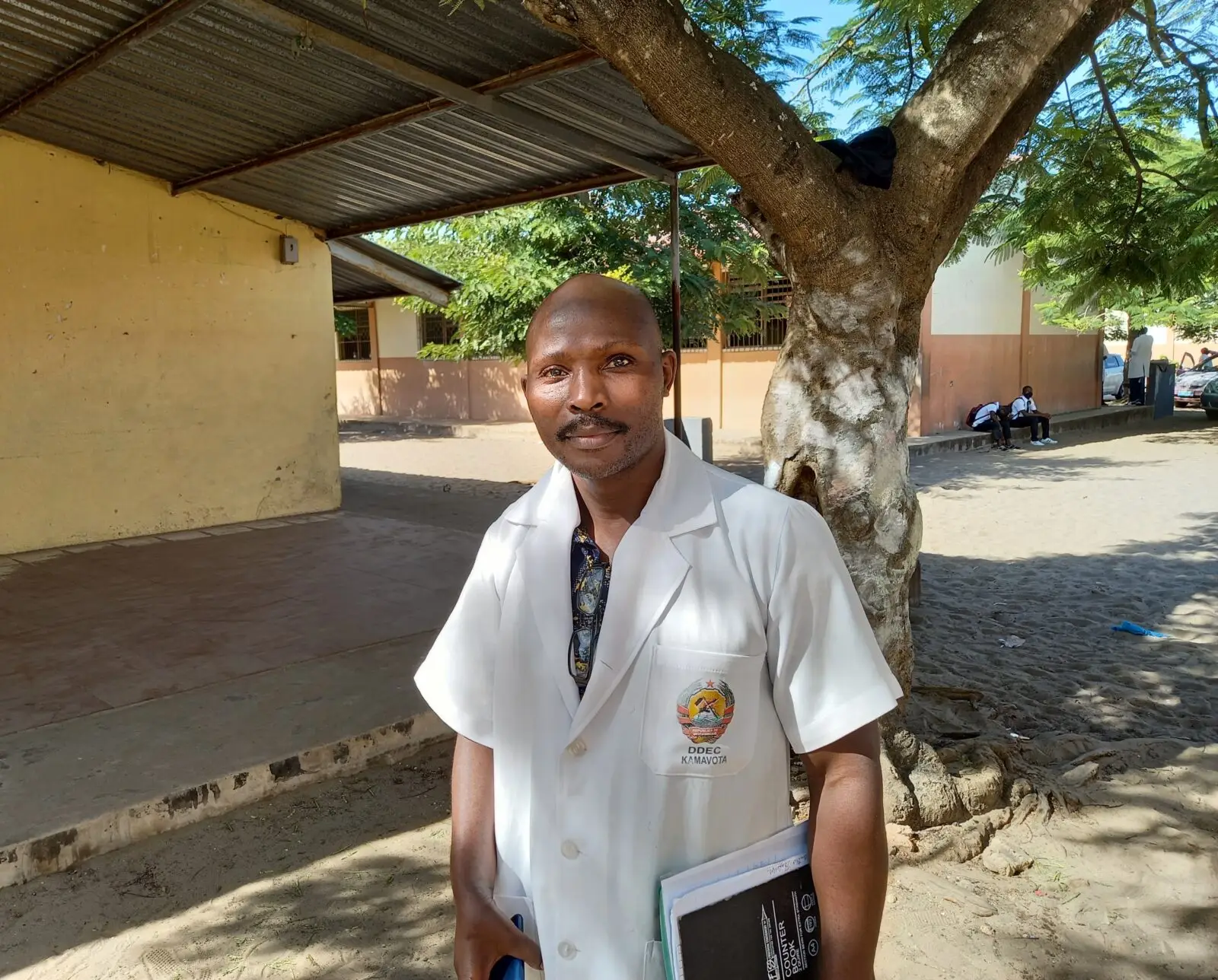Prof Sérgio
School Teacher in Maputo raising awareness of RHD
Mozambique

Story shared with assistance of interpreter Mr Clement Carlos
School life marks the start of formal learning and unlimited curiosity. In some countries, such as Mozambique, school is also where teachers are pivotal in the fight to save young hearts. This is due to the prevalence of rheumatic heart disease (RHD), detectable and preventable, yet claiming around 300,000 lives every year. More than 40 million people still suffer from RHD and most patients do not reach their 40th birthday, often experiencing prolonged disability. RHD is caused by a bacterial infection in the respiratory tract that can develop into rheumatic fever and affect heart valves.
As he recounts his experience, Professor Sérgio Antonio Matavel whom everyone calls “Prof. Sérgio” reminds us that “children must be healthy to have the best chance at learning.” Sore throat, joint pain and fever are some common manifestations of RHD but not always detected as systematic check-ups are non-existent. He says that often, telltale signs are not physical but behavioural: lethargy, unresponsiveness in class, and staying alone rather joining the other children to play games.
When day dawns in Maputo’s school districts, parents head to work so that they can put food on the table. They want to see their children get an education and improve their chances of rewarding work later in life. Unfortunately, these good intentions sometimes mean that children as young as six years of age are sent off to school despite feeling ill because symptoms are missed, or they remain at home to fend for themselves. Coupled with low awareness about RHD, the burden of meeting the family’s needs, seeing that homework gets done, and that children go to class add to the challenge of combatting RHD.
An exam to enter the field of administration took too long to materialise so Prof. Sérgio’s uncle intervened and helped him launch a career in education instead. He has never looked back, describing it as a “blessing in disguise.” For the past 22 years, he has been helping to change the life course of students aged 6-15 years old and adults up to 60 years of age whose dream has been to receive an education. Children’s classes are 60 to 80 children per class and up to 10 per cent of a given class can be affected by RHD.
“I found myself,” says Prof Sérgio, in one of the best ways anyone has ever described the teaching profession as a calling. “Before the colouring books and crayons arrived, we were not talking about symptoms or sharing much about what we were seeing in our classes. Now, we are understanding the scale of the problem and the opportunities to take better care.” Prof. Sérgio is referring to the “Colours to Save Hearts” partnership project launched in 2021. The storybook format allows children to learn about the disease through the eyes of the story’s character.
Brimming with hope and ideas, Prof Sérgio wonders what more we can do, for example, by conducting studies or surveys to help children learn and continue their education despite illness. He would like to see increased parental involvement and attentiveness to a preventable, and potentially fatal disease that now affects mostly sub-Saharan Africa, the Middle East, South-East Asia, and the Western Pacific.
Communication among households, schools and district authorities seems to be growing. The president and community members of the local school council are in touch with government officials at county or state level; securing adequate and informed representation will be key. The backdrop to diseases such as RHD often reflects socioeconomic struggles and the issues of proper housing and nutrition. While addressing these challenges can sometimes take years, we can act now to ensure that children have access to testing, diagnosis and treatment and that they can look forward to a heart-healthy future.
Read more about the project Colours to Save Hearts.